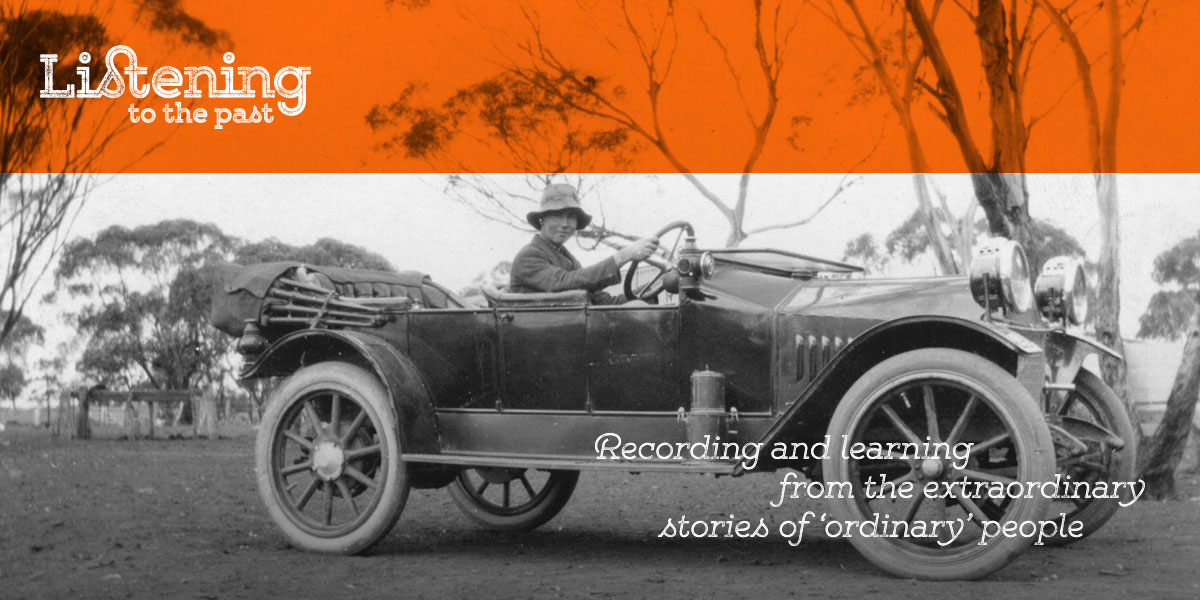For most of us who are not pilots, it is difficult to imagine what it must be like to fly a new aircraft for the first time, on your own.
Robert Treloar was a junior flying officer at RAAF Williamtown, New South Wales, in 1970. Already an experienced helicopter pilot, he learned to fly the Sabre jet engine on one of the last Sabre courses before the aircraft were retired. When I interviewed him, he described what it was like to fly the Sabres.

A Sabre aircraft by Running Productions, CC BY 2.0.
The Sabre was a magic aircraft to fly. It was a big aircraft. If you climbed up the side to jump in the cockpit, when you sat in there you looked down on the world and you felt like you were the king of the world. Even by their standards, it was a little old with its flight control systems, it was a bit difficult to fly, especially at high speed, high performance; and it was a day fighter, so we did most of our flying in daytime, day tactics, fighter tactics, spotting, gunnery, strafing. It was wonderful, a great aircraft to fly. And you flew it as a single-seater…So your first flight was by yourself…when you were ready to go you’d be briefed up by your instructor, he would jump into a second Sabre and he would follow you down the taxiway. The first trip was just trying to taxi and not run off into the grass. It was a very sensitive aircraft by all of our standards. And when we’d taxied it successfully up and down the runway and not come to grief they figured we’re right and let us go for a take-off.
Preparing for the first take-off
So on the next trip we’d go down, lined up at the end of the runway, the student in the centre of the runway, the instructor tucked off to one side trying to keep out the road and keep an eye on you, you run through your checks hoping you’ve got them right because there’s nobody to check you. Previously in all of my Air Force career, four or five years of it, there’d always been somebody there to make sure you had your checks right and you hadn’t forgotten anything, and that was always a nice feeling, you got to rely on that. When you sat in the cockpit for the first time by yourself and you were about to take off by yourself, I went through those checks several times before I got ready to go. Ran the engine up, hold the aircraft on brakes, engine virtually on full power, and I think I was pretty much the same as most other people, I actually got airborne because my feet slipped off the brakes and the aircraft got away from me. Up we went.
Getting airborne
And the first thing you had to do… was get the aircraft airborne. It was very slick, it accelerated very quickly, and it was a great disgrace if you overspin the undercarriage, it went faster than its limits, while it was down. So it was a real race to get the aircraft airborne, brake the wheels and then bring the undercarriage up, and then off into the trip… once it was airborne it was like most other high-performance aircraft. And coming back to land was very interesting because you couldn’t do touch-and-go; the engine didn’t accelerate fast enough for you to land, run along the ground, take off again on the runway. So you did low approaches till you’d think you had it right and then you were committed to a landing and you hoped you had it right, with the instructor muttering to you in the corner. And my first solo, like everybody else’s first solo, was uneventful. It was more of the height and getting to it than it was in flying it. But it was a thing I look back on with a certain degree of nostalgia as, I think, my first real solo experience in the Air Force, in spite of everything else I’d done beforehand. It was interesting.
Farewell to the Sabre
…And because we were the last course plus one we then spent a fair amount of time flying round Australia doing farewells of the Sabre. We flew over all the capital cities, we’d fly past in formation, and we got pretty good at formation flying after a while. It was a lovely aircraft to fly.”
You can still see Sabre aircraft; several Australian aviation museums have them in their collections including: the Australian Aviation Heritage Centre in Darwin, the Australian National Aviation Museum at Moorabbin in Victoria, Classic Jets Fighter Museum at Parafield in South Australia , Fighter World at Williamtown, NSW, Queensland Air Museum in Caloundra, and Temora Aviation Museum in New South Wales.
Extract from oral history interview with Robert Treloar used with the permission of the Australian Government Department of Defence.
